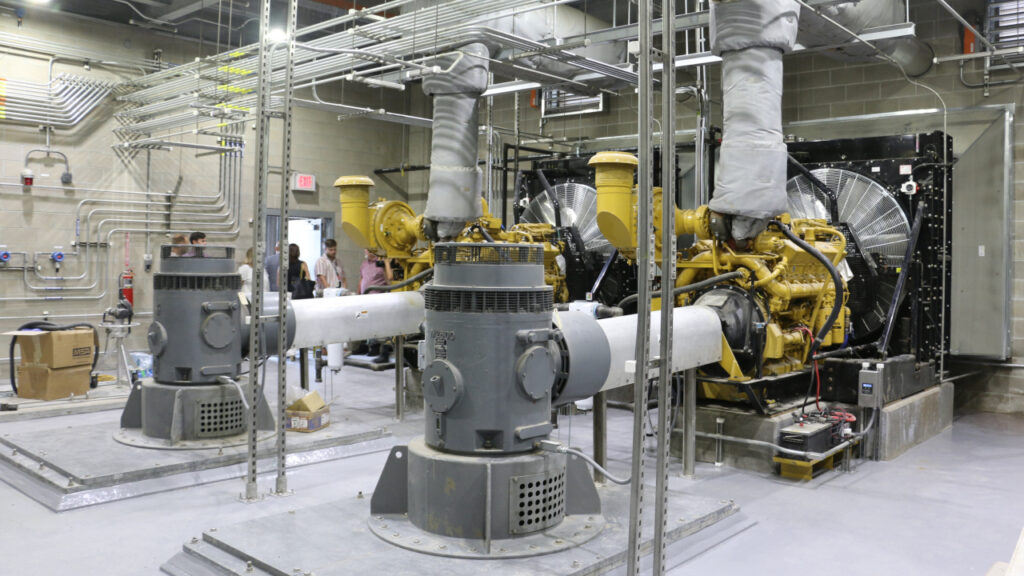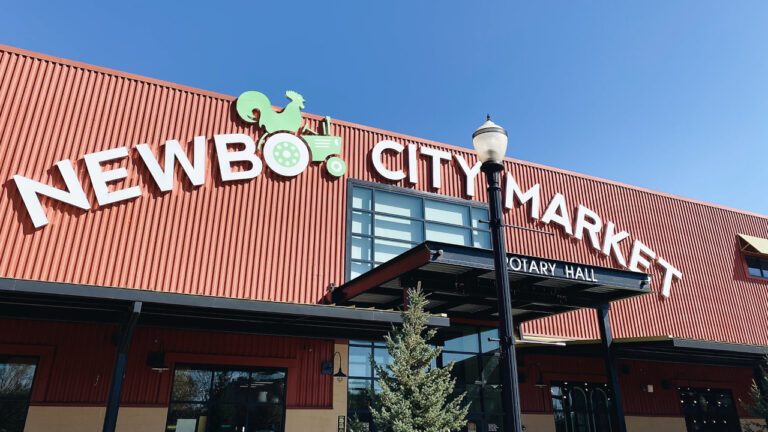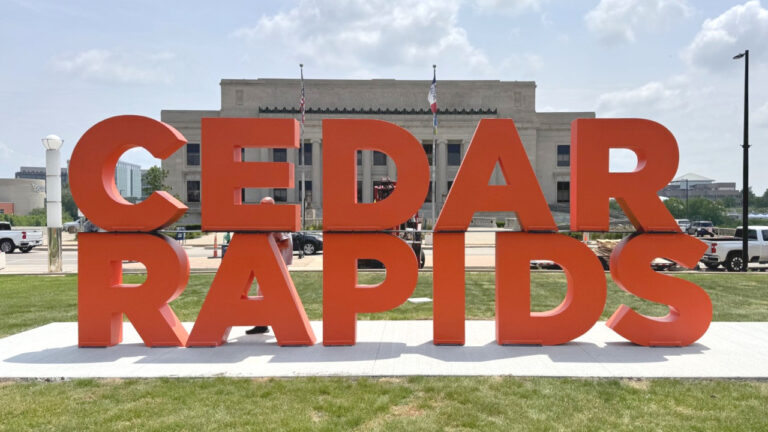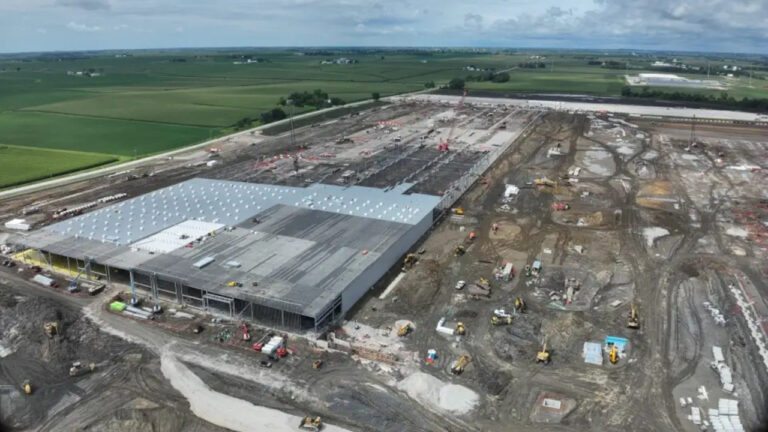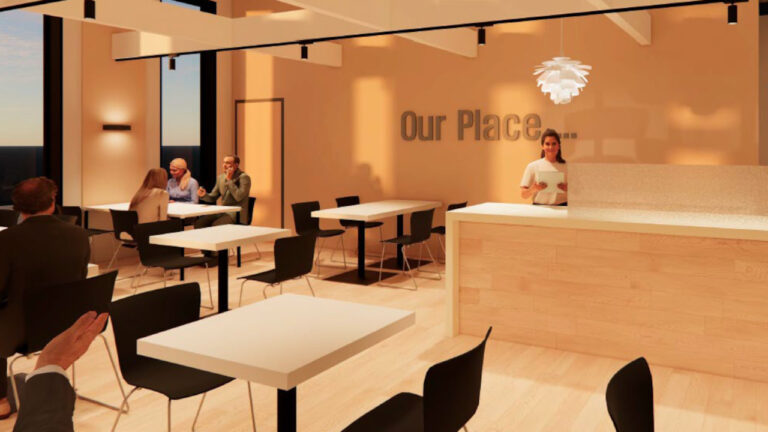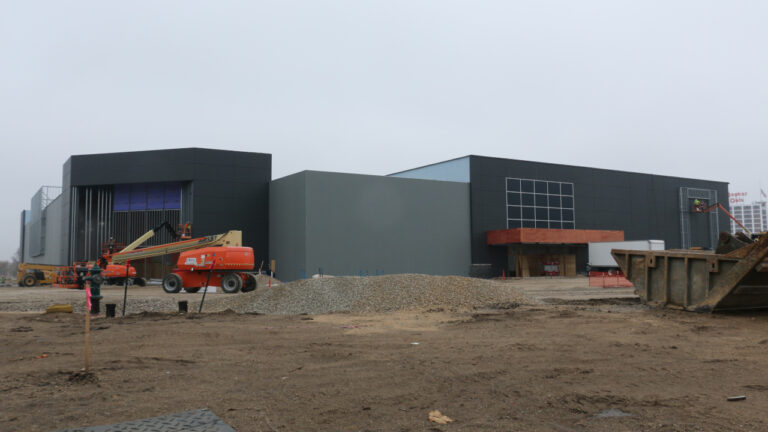Flood protection for the west side of Cedar Rapids has taken a significant step forward, city leaders said Monday morning as they gathered to dedicate, and ceremonially cut the ribbon, for a major addition to the city’s permanent flood control system.
The ceremony was held along the west bank of the Cedar River, just outside the National Czech & Slovak Museum & Library – a flood story in itself, since the museum building was relocated to higher ground in the wake of the devastating June 2008 flood in an effort to avoid future flooding concerns.
Monday’s ceremony marked the completion of a project that included a new stormwater pump station, a detention basin, a reinforced concrete wall with a terraced lawn for public gatherings stretching from 12th to 16th avenues SW, and a retractable flood gate across 16th Avenue SW.
The new flood control segment forms a connection to a downstream Czech Village levee and an upstream segment near the Ingredion plant, which was celebrated in a dedication event in March 2024.
To date, the city’s flood protection system is about 42% complete, according to city figures – 57% complete on the river’s east side and 22% complete on the west. Another 6% is currently under construction.
The city’s full flood protection system, with projected completion in 2035, is expected to carry a price tag of $1.1 to $1.3 billion.
Cedar Rapids mayor Tiffany O’Donnell noted that the new pumping station, the largest in the city’s current flood control network, can pump up to 74,000 gallons of water per minute from the Czech Village watershed back into the river to cope with flooding events. The system is also designed so its capacity can be nearly doubled – up to 148,000 gallons per minute – in the future if needed.
She said the latest project, like the other phases of the city’s flood control system, is designed with a goal to provide “flood protection in plain sight.”
“We’re inspired that after every bit of land around us was covered with water, where we stand right now, and the community came together to not only protect Cedar Rapids, but to make sure that we retained our identity and didn’t wall ourselves off from this incredible resource,” Ms. O’Donnell said, referring to the nearby Cedar River.
Gallery
She outlined the cutting-edge technology that was used to design the newest project.
“There is that saying in Cedar Rapids that we’re going to protect the things that we treasure in our community, using the latest technology and innovation to do so,” Ms. O’Donnell said. “We’re always asking the question, what do we innovate and what do we retain? So it is inspiring today to see the mix of how we’ve done that, marking this chapter in our flood control journey.”
She also noted the new pumping station was designed to mimic the architecture of the nearby museum and the Czech Village business district.
“So it’s one more way to make sure that we continue to embrace the river as part of our community, even though we make sure that we are protected from it,” she said.
City council member Tyler Olson, who chairs the council’s flood control systems committee, said Monday’s ceremony marks a “major milestone” in the city’s ongoing flood protection effort.
“With each new stretch of permanent protection, our city becomes even more prepared for the future, with several new projects now complete, upstream and downstream on both sides of the river, and several more already underway,” Mr. Olson said. “Our progress continues to accelerate.”
He also said the progress made to date represents a joint effort by local, state and federal officials, noting that the city of Cedar Rapids has spent “over $100 million” on flood control for the city’s west side.
“The city has been doing a lot of construction in your neighborhood, but I think, as you’ll see by the projects that we’re cutting the ribbon on today, we’re not only adding flood control and protection to the neighborhood, but also adding an amenity that people can use even when it’s not being used for its primary purpose, which obviously we hope it never is,” he said.
City manager Jeff Pomeranz also called out the perseverance and cooperation that has propelled the flood protection system’s progress so far, and noted that the new pump station will be put into service the moment the river reaches 14 feet, “making it the first pump station to be activated during a flood event.”
“The innovative thinking that has gone into our flood control system across the board, is notable,” he said, adding that the detention basin, located near Riverside Park, reduced the required size of the pump station by 37%.
“As each piece of our permanent flood control flood control system comes online, it means that less temporary measures, like HESCO barriers, are needed to fight floods like the ones we’ve been seeing this summer and spring,” Mr. Pomeranz said. “Today’s ribbon cutting marks another important step towards a safer, stronger Cedar Rapids, a future where our community can face rising waters with confidence.”


